Did you know that gangs are not all about crime and violence?
We are bombarded by the media with endless news about gang violence and criminal activities. However, a group of scientists want to put forward a different scenario. Dr Carles Feixa Pàmpols and Dr José Sánchez García, based at Pompeu Fabra University in Barcelona, Spain, are working on a multinational project known as TRANSGANG to highlight a more favourable view of gang culture. A view where gangs can resort to mediation – and not violence – to solve conflicts
TALK LIKE AN ANTHROPOLOGIST
GANG – informal youth group, typical of urban-popular areas, characterised by its connection to a local territory, a situational leadership, and by the moral solidarity existing among its members. This concept has a criminal facet, a recreational facet and many hybrid expressions
BANDA – the Spanish equivalent for ‘gang’
MARA – short for Marabunta, a mara is a form of gang originating from the US, which spread to countries in Central America, including El Salvador, Honduras and Guatemala. Their activities are mostly criminal, such as drug trafficking, auto theft and illegal immigration. Members often have tattoos to show their affiliation to the gang
PANDILLA – street gang present in Spain and Latin America. Sometimes it means simply a group of peers; on other occasions it means a criminal group
CLICAS – cells or groups derived from the original gang. In the 1980s and 1990s, many gang members were deported from the US
What comes to mind when you think of ‘gangs’? In many cases, the word ‘gang’ is used to describe the evils of youth culture, and all the violence and crime associated with a strong street presence. However, young men and women are not born violent gang members. Instead, a history of family breakdown, poor education, unemployment and poverty forces them to join youth street groups. Similarly, it is often thought that the only way gangs know how to solve a conflict is through violence. Dr Carles Feixa Pàmpols and Dr José Sánchez García, based at Pompeu Fabra University in Barcelona, Spain, want to offer a different explanation, however. They are keen to learn how these groups can use mediation to address their issues internally and with other groups.
City gangs, like in Philadelphia and Chicago, really came to life in the 19th century in the US. Often, these groups were set up to defend the interests of newcomers to the region, such as Irish gangs in the 1880s and the Latino gangs in the 1920s. By the late 1950s, the American gang model reached other parts of the world, mostly through cinema and television. Across the globe, youth gangs started to develop in Latin America, Europe and even Africa, mostly following the American model but with their own regional traditions.
There is a lot of research into gang culture, but for all these years, the focus has been on criminal activities and violent behaviour. Few people have considered how gangs can have a positive influence. This includes, for example, forming a welcoming place for new members migrating from a different country or being the first on the scene to help the community, such as in 2017 when a massive earthquake hit Mexico. “In short, we need new ways of talking about youth gangs in the global era and this project sets out to fill this gap,” explains Carles.
LOOKING FOR POSITIVES
Carles, José and their international team are looking at successful cases of youth gangs and social inclusion. Their TRANSGANG project focuses on Latino and Arab youth gangs from several locations in the Americas, Southern Europe and North Africa, and across different gang cultures, including pandillas, clicas, combos and maras. Latino and Arab youth populations are increasing in America and Europe. Many young men and women from these groups feel rejected by society and stigmatised with allegations of delinquent behaviours, drug trafficking and radicalisation. “These images are far from the real situation,” explain the researchers. “Our aim is to help these populations integrate in society, acknowledging their circumstances and youth culture.”
PRACTICAL TIPS TO HELP RESOLVE A DISPUTE
For the researchers, mediation is key. Their ambition is to empower youth street group members through mediation, to give them the confidence and skills to avoid marginalisation. Crucially, mediation is not a magic wand that can solve every conflict; sometimes conflicts do not have a solution that suits both sides, but those involved can learn to handle a conflict situation through mediation. Interestingly, mediation may come naturally to gang members. Most members are forced to leave school early, but their time in the gang gives them ‘hidden skills’ like empathy, resilience and first-hand migration experience, which they can share with new members.
The TRANSGANG team believes that, “with the proper training, gang members can turn into valuable professional mediators, as demonstrated by former members of youth street groups who now work mediators for NGOs, associations, social services and even private companies”. Youth culture – like rap battles – could be another tool for mediation. Excitingly, Carles and José found that not only have some youth groups embraced TRANSGANG’s approach, but they also wanted to become a legal organisation. This is not an easy process, of course, because some of the gangs’ members lack trust in the authorities and are therefore reluctant to ‘enter’ the system.
One youth group, the Almighty Latin King and Queen Nation (or Latin Kings), was willing to talk to resolve conflict, but the regional government in Madrid was in strong opposition. The first principle of mediation – cooperation on both sides – was missing. In Madrid, the Latin Kings are still an illegal gathering. In another region of Spain, however, the Latin Kings were successful in becoming recognised as a legally-accepted, cultural association. This is thanks to successful mediation between the local government and the Latin Kings in Barcelona.
CHANGING PEOPLE’S MINDS ABOUT GANGS
The researchers working on the TRANSGANG project are keen to change the public’s perception about youth street groups. In addition to academic publications, the project will produce three documentary films and set up public events, with the participation of current and former members of youth gangs. What is more, the Spanish leading newspaper El Pais is publishing a series of articles on gang culture and the TRANSGANG project. These articles focus on the positive aspects of youth street groups. “If we keep that community alive after the completion of the project, we will have succeeded,” says José “We believe that the lack of mediating spaces and communication is one of the fundamental problems of global societies.”
What is clear is that gangs themselves are not the problem. Indeed, they can be active agents in the search for solutions. Young people, especially those from a deprived background or another country, join these groups for solidarity and as a part of growing up. If gangs are formed under strong moral codes of conduct and rely on mediation rather than violence to solve their conflicts, these groups can be a very positive force in society. In this scenario, senior members are ideally placed to support newcomers and steer them into responsible adulthood.
 DR CARLES FEIXA PÀMPOLS
DR CARLES FEIXA PÀMPOLS
Principal Investigator
DR JOSÉ SÁNCHEZ GARCÍA
Scientific Coordinator
Department of Communication
Pompeu Fabra University
Barcelona, Spain
FIELD OF RESEARCH: Anthropology
RESEARCH PROJECT: Transnational Gangs as Agents of Mediation: Experiences of Conflict Resolution in Street Youth Organisations in Southern Europe, North Africa and the Americas (TRANSGANG)
FUNDER: European Research Council
Reference
https://doi.org/10.33424/FUTURUM108
Images sourced by TRANSGANG
GANG – informal youth group, typical of urban-popular areas, characterised by its connection to a local territory, a situational leadership, and by the moral solidarity existing among its members. This concept has a criminal facet, a recreational facet and many hybrid expressions
BANDA – the Spanish equivalent for ‘gang’
MARA – short for Marabunta, a mara is a form of gang originating from the US, which spread to countries in Central America, including El Salvador, Honduras and Guatemala. Their activities are mostly criminal, such as drug trafficking, auto theft and illegal immigration. Members often have tattoos to show their affiliation to the gang
PANDILLA – street gang present in Spain and Latin America. Sometimes it means simply a group of peers; on other occasions it means a criminal group
CLICAS – cells or groups derived from the original gang. In the 1980s and 1990s, many gang members were deported from the US
What comes to mind when you think of ‘gangs’? In many cases, the word ‘gang’ is used to describe the evils of youth culture, and all the violence and crime associated with a strong street presence. However, young men and women are not born violent gang members. Instead, a history of family breakdown, poor education, unemployment and poverty forces them to join youth street groups. Similarly, it is often thought that the only way gangs know how to solve a conflict is through violence. Dr Carles Feixa Pàmpols and Dr José Sánchez García, based at Pompeu Fabra University in Barcelona, Spain, want to offer a different explanation, however. They are keen to learn how these groups can use mediation to address their issues internally and with other groups.
City gangs, like in Philadelphia and Chicago, really came to life in the 19th century in the US. Often, these groups were set up to defend the interests of newcomers to the region, such as Irish gangs in the 1880s and the Latino gangs in the 1920s. By the late 1950s, the American gang model reached other parts of the world, mostly through cinema and television. Across the globe, youth gangs started to develop in Latin America, Europe and even Africa, mostly following the American model but with their own regional traditions.
There is a lot of research into gang culture, but for all these years, the focus has been on criminal activities and violent behaviour. Few people have considered how gangs can have a positive influence. This includes, for example, forming a welcoming place for new members migrating from a different country or being the first on the scene to help the community, such as in 2017 when a massive earthquake hit Mexico. “In short, we need new ways of talking about youth gangs in the global era and this project sets out to fill this gap,” explains Carles.
LOOKING FOR POSITIVES
Carles, José and their international team are looking at successful cases of youth gangs and social inclusion. Their TRANSGANG project focuses on Latino and Arab youth gangs from several locations in the Americas, Southern Europe and North Africa, and across different gang cultures, including pandillas, clicas, combos and maras. Latino and Arab youth populations are increasing in America and Europe. Many young men and women from these groups feel rejected by society and stigmatised with allegations of delinquent behaviours, drug trafficking and radicalisation. “These images are far from the real situation,” explain the researchers. “Our aim is to help these populations integrate in society, acknowledging their circumstances and youth culture.”
PRACTICAL TIPS TO HELP RESOLVE A DISPUTE
For the researchers, mediation is key. Their ambition is to empower youth street group members through mediation, to give them the confidence and skills to avoid marginalisation. Crucially, mediation is not a magic wand that can solve every conflict; sometimes conflicts do not have a solution that suits both sides, but those involved can learn to handle a conflict situation through mediation. Interestingly, mediation may come naturally to gang members. Most members are forced to leave school early, but their time in the gang gives them ‘hidden skills’ like empathy, resilience and first-hand migration experience, which they can share with new members.
The TRANSGANG team believes that, “with the proper training, gang members can turn into valuable professional mediators, as demonstrated by former members of youth street groups who now work mediators for NGOs, associations, social services and even private companies”. Youth culture – like rap battles – could be another tool for mediation. Excitingly, Carles and José found that not only have some youth groups embraced TRANSGANG’s approach, but they also wanted to become a legal organisation. This is not an easy process, of course, because some of the gangs’ members lack trust in the authorities and are therefore reluctant to ‘enter’ the system.
One youth group, the Almighty Latin King and Queen Nation (or Latin Kings), was willing to talk to resolve conflict, but the regional government in Madrid was in strong opposition. The first principle of mediation – cooperation on both sides – was missing. In Madrid, the Latin Kings are still an illegal gathering. In another region of Spain, however, the Latin Kings were successful in becoming recognised as a legally-accepted, cultural association. This is thanks to successful mediation between the local government and the Latin Kings in Barcelona.
CHANGING PEOPLE’S MINDS ABOUT GANGS
The researchers working on the TRANSGANG project are keen to change the public’s perception about youth street groups. In addition to academic publications, the project will produce three documentary films and set up public events, with the participation of current and former members of youth gangs. What is more, the Spanish leading newspaper El Pais is publishing a series of articles on gang culture and the TRANSGANG project. These articles focus on the positive aspects of youth street groups. “If we keep that community alive after the completion of the project, we will have succeeded,” says José “We believe that the lack of mediating spaces and communication is one of the fundamental problems of global societies.”
What is clear is that gangs themselves are not the problem. Indeed, they can be active agents in the search for solutions. Young people, especially those from a deprived background or another country, join these groups for solidarity and as a part of growing up. If gangs are formed under strong moral codes of conduct and rely on mediation rather than violence to solve their conflicts, these groups can be a very positive force in society. In this scenario, senior members are ideally placed to support newcomers and steer them into responsible adulthood.
MEET MORE OF THE TRANSGANG PROJECT TEAM
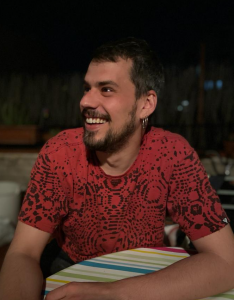
DR EDUARD BALLESTE, BARCELONA, SPAIN
WHAT DID YOU WANT TO BE WHEN YOU WERE YOUNGER?
I was not sure what I wanted to be. It was difficult to imagine a trade or a career to which I would like to dedicate myself. Even so, I have always liked everything related to history (movies, books, museums, etc.).
HOW DID YOU END UP STUDYING SOCIAL ANTHROPOLOGY? WHAT DREW YOU TO THIS SUBJECT?
It was a mix between chance and opportunities that opened up. I like the search to understand meanings, cultures and worlds that, although geographically close, could be unknown to me. Finally, fate gave rise to an opportunity (both economic and academic infrastructure) to do a PhD in social anthropology and be able to fully enter this field.
WHAT IS YOUR ROLE IN THE TRANSGANG PROJECT?
In the TRANSGANG Project, I have the role of local researcher for the city of Barcelona (the Core Case of Southern Europe). I oversee fieldwork in the city and coordinate other researchers involved.
WHY ARE PROJECTS LIKE TRANSGANG IMPORTANT?
It focusses on people who normally are invisible or stigmatised. It not only makes them visible from an external position, but also tries to give them a voice. They can narrate their situations and their history. This makes it possible to deepen our understanding of these groups in a way that is separate from the mainstream discourse of the media or the politicians themselves.
I think it is great to carry out a comparative study between 12 cities in three different geographical regions. Such commitment can not only provide valuable knowledge about the groups of young people themselves, but also delve into the impact of migration.
WHAT CAN YOUNG PEOPLE WHO ARE NOT GANG MEMBERS LEARN FROM THIS PROJECT?
I think that the project itself goes beyond gang members. Understanding the experience of living in the margins of society, whether through gangs or other groups, allows us to understand how exclusion and stigmatisation affect specific groups.
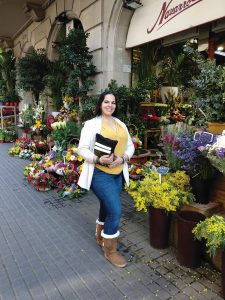
MARÍA OLIVER TORRES, MADRID, SPAIN, AND EX-MEMBER OF THE LATIN QUEENS
“I had some Latino friends from Ecuador who proposed to create a group of the Latin Kings & Queens Nation in my hometown, so I decided to join. I was the only female in this group when it started in Madrid in 2000. I joined the group because I was tired of witnessing Latinos being abused, physically and verbally, in the streets, in their jobs and in their free time. I have always been someone who seeks social justice; I’m an anti-racist and a fighter for equality, values that are at the core of the Latin Kings & Queens Nation.
When more girls started to show up from Ecuador, or to join the group in Spain, the Latin Queens group took shape and I eventually joined them. I found a community of sisters that provided mutual support and that became more and more independent from the group of men as time passed. I found sisterhood there, even before I knew the word existed.
My experience with the Latin Queens has brought empathy and sorority. For us women, we are raised in a world that tells us we have to be enemies, to fight for male attention, to be pretty, to be nice, to wear uncomfortable clothes to look good, etc.
The Queens’ standards told us to help and support each other, grow together, be independent, strong, and have self-worth, without male validation. We promoted collaboration instead of competition. These values are good for any teenager in the Western world who feels that her actions, body and even her feelings are being constantly monitored.
I also learned the value of diversity, different cultures and community. The sentence “it takes a village to raise a child” is one that comes to my mind when I reflect over these issues now.”
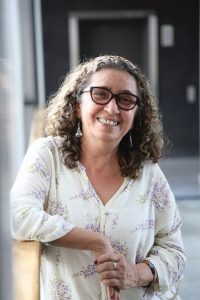
FULVIA MÁRQUEZ, COLOMBIA
“Youth street groups are a rich and novel experience, scarcely studied from perspectives other than criminology or from studies on violence and security, which has rendered public policy responses for containment and control. TRANSGANG offers new perspectives, recognising significant mediation experiences from the youth street groups themselves and institutions.”
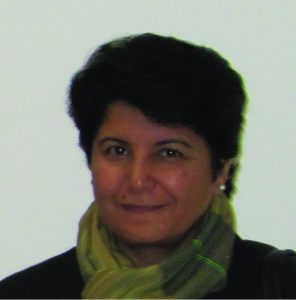
SIHEM NAJAR, TUNISIA
“The TRANSGANG project, which brings together researchers from several geographical and cultural areas, offers us an opportunity to develop a new original, comparative approach, and allows us to understand complex juvenile realities experienced at a local level, and overall. These are young people living on the fringes of society who are often left out by the classical social sciences. TRANSGANG is all the more important because it will lead to advocacy. This is essential in the current context, marked by marginalisation, exclusion and social injustice in its various forms, to which young people are exposed.”
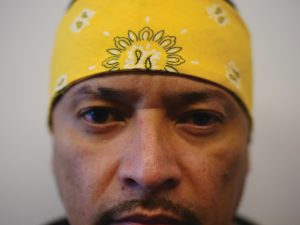
CÉSAR ANDRADE ARTEAGA, BARCELONA, SPAIN
César is a member of Latin Kings and assistant research on the TRANSGANG project.
To read about his positive experience as a gang member, visit: https://futurumcareers.com/can-gangsteach-us-about-empathy-respect-and-solidarity
BREAKING THE CYCLE OF CRIME
Our perception of gangs is often negative, but there are many positive stories – stories of rehabilitation and community integration. The best way to break the cycle of crime is to turn those difficult and traumatic experiences into forces for good. As an example, Carlos Cruz, a former gang member, started Cauce Ciudadano to offer opportunities to other gang members living in environments marked by social exclusion, drug trafficking and criminal activities. You can read more about his and other members’ experiences here: https://www.facebook.com/CauceAC/
The Ensemble LiberARTE from El Salvador is a string orchestra composed of young women who are either living or have lived at the ISNA Prison for Young Women. The Asociación Tiempos Nuevos Teatro is working with these women to increase their self-esteem and skills. You can read more about their work, both with former gang members and women in prison or living on the streets, at: http://www.tnt.org.sv/wp/casa-de-encuentro/que-es-cde/.
AN ETHICAL DILEMMA
Researchers on the TRANSGANG project have to follow a strict code of ethics. They are studying members of youth street gangs, many of whom may be teenagers and therefore considered minors. Carles, José and the TRANSGANG team have to ask themselves a lot of ethical questions. For example, only teenagers aged 14 and over were invited to take part in the project but are 14-year-olds experienced enough to understand what it means to be involved? Do their parents or legal guardians need to be informed? What if by telling parents or legal guardians, the child is at risk from harm? If a gang member admits to taking part in a criminal activity, should the police be informed?
What do you think?
ABOUT ANTHROPOLOGY
In very general terms, anthropologists ask questions about people, their culture and environment. A popular misconception is that anthropologists only study remote tribes. While this is true for some researchers, many others – like Carles, José, Eduard, María, Fulvia and Sihem – carry out their work in a city environment and seek to understand how people behave in different, everyday scenarios. The TRANSGANG project looks at ways to resolve conflicts within gangs, between gangs, and between gangs and their social environment.
WHAT DOES ‘SOCIAL ENVIRONMENT’ MEAN?
Social environment refers to the immediate social setting in which people live. It includes the culture that an individual is educated or lives in, and the people and institutions with whom they interact. It includes informal and formal rules, as well as values, feelings, thoughts and actions, which determine the actual position of a person in a given setting (e.g. workplace, school, family).
WHY STUDY ANTHROPOLOGY?
Anthropology is more necessary than ever. In a world where inequalities seem to be growing, having the tools to allow us to study, understand and combat them is important. Also, as Carles explains, “anthropology gives you tools to be a better person and develop true empathy towards others. As an anthropologist, you can improve your critical thinking, respect for cultural diversity and set up development projects to help people”.
PATHWAY FROM SCHOOL TO ANTHROPOLOGIST
Carles and José recommend studying social sciences or humanities such as geography, history, sociology and psychology. At degree level, anthropology, social anthropology or biological anthropology are good options.
Many honours courses combine other social sciences or vocational subjects such as law:
https://www.topuniversities.com/courses/anthropology/guide
Many courses have the option to study abroad for a year. This is the best way to develop your understanding of anthropology across the world.
Do you have a question?
Write it in the comments box below



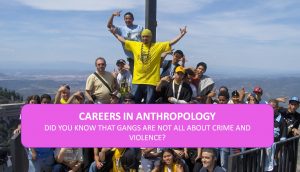



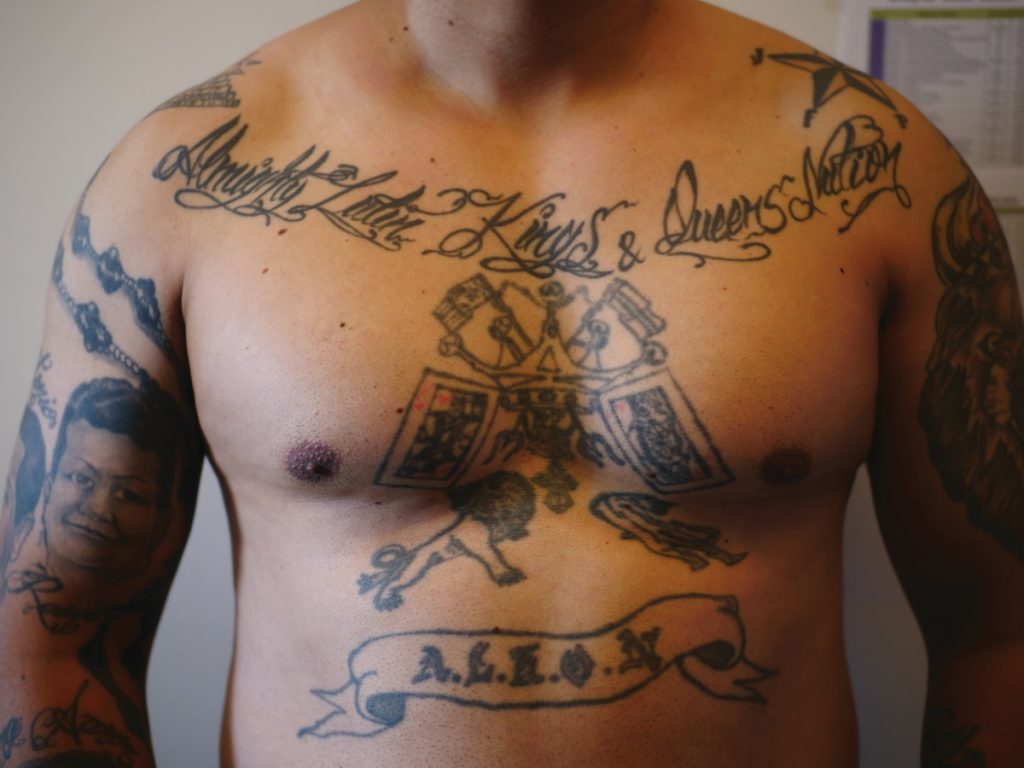
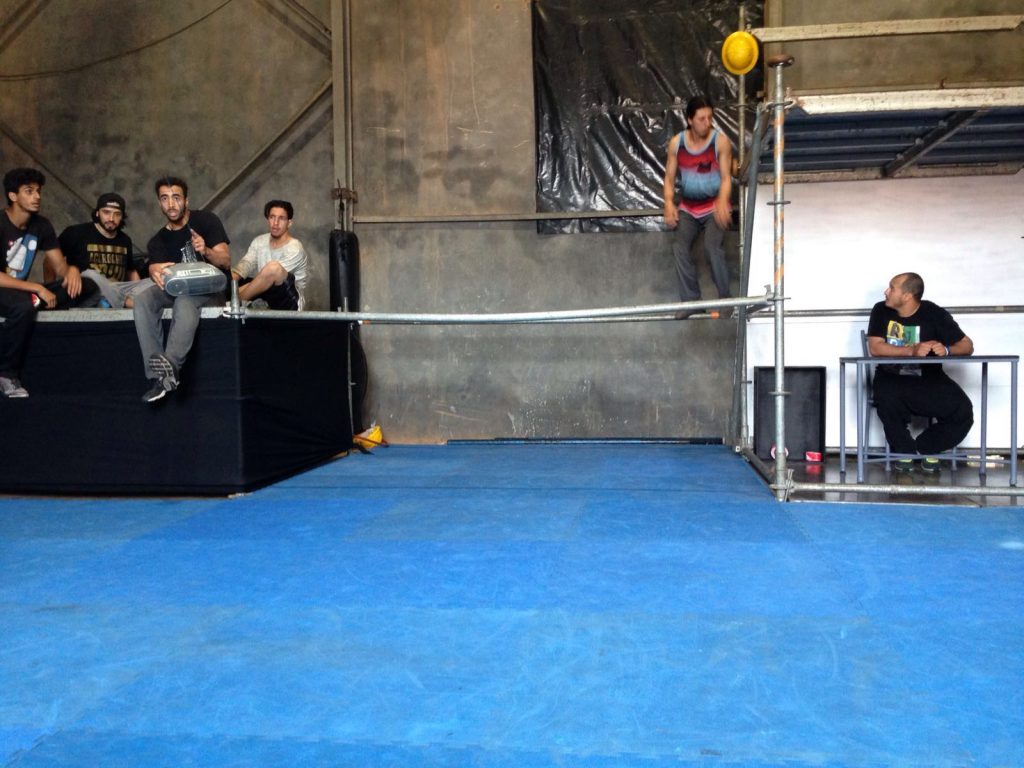
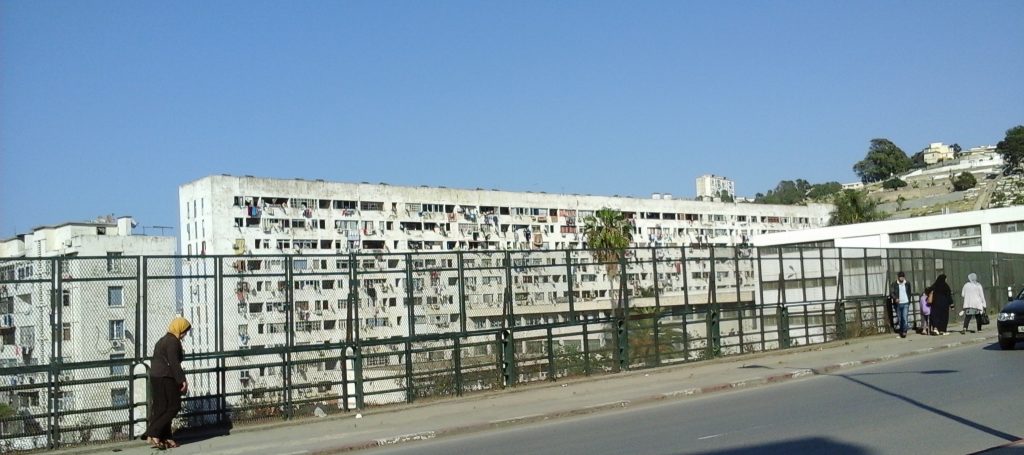


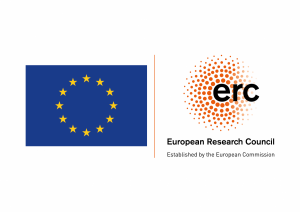
Is there a gang that helps verdly abused, physically abused and mentally abused?
There are gangs of any type, depending on the leaders, on the social background and of the reaction by police and criminal justice system. Some of the street groups we have studied, like some chapters of the Latin Kings and Queens, and Ñetas in Spain, Hip-hopers in Colombia, and Hittistes in north Africa, take care of the physical and mental abuse of their members, including those who are in prison, protecting them from the abuse by other members, by other gangs, and mostly by police. There are of course authoritarian leaders and bullying members, but not more than in other social groups. Mutual aid and solidarity is one of the group priorities. You can notice more infos in the website of TRANGANG.